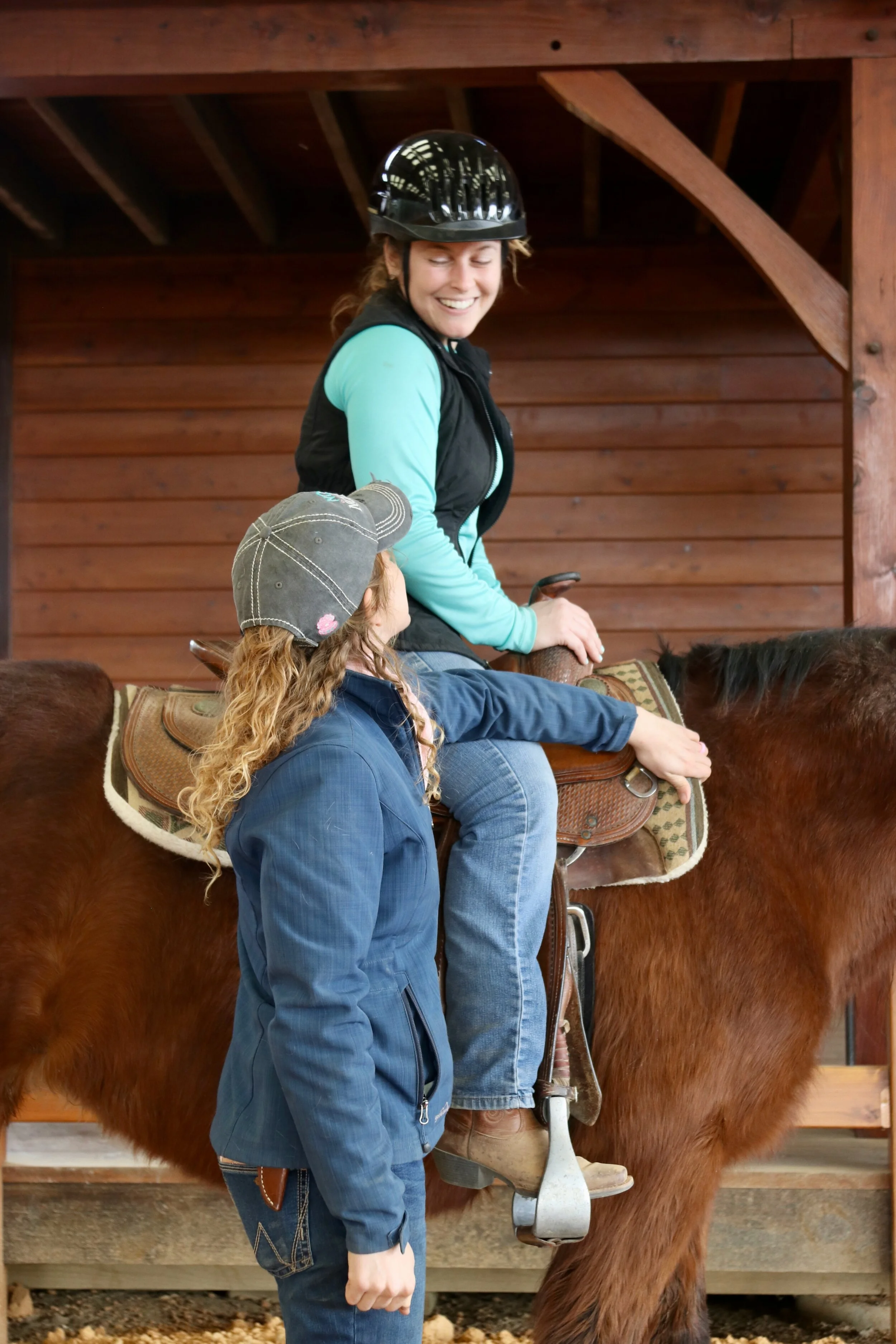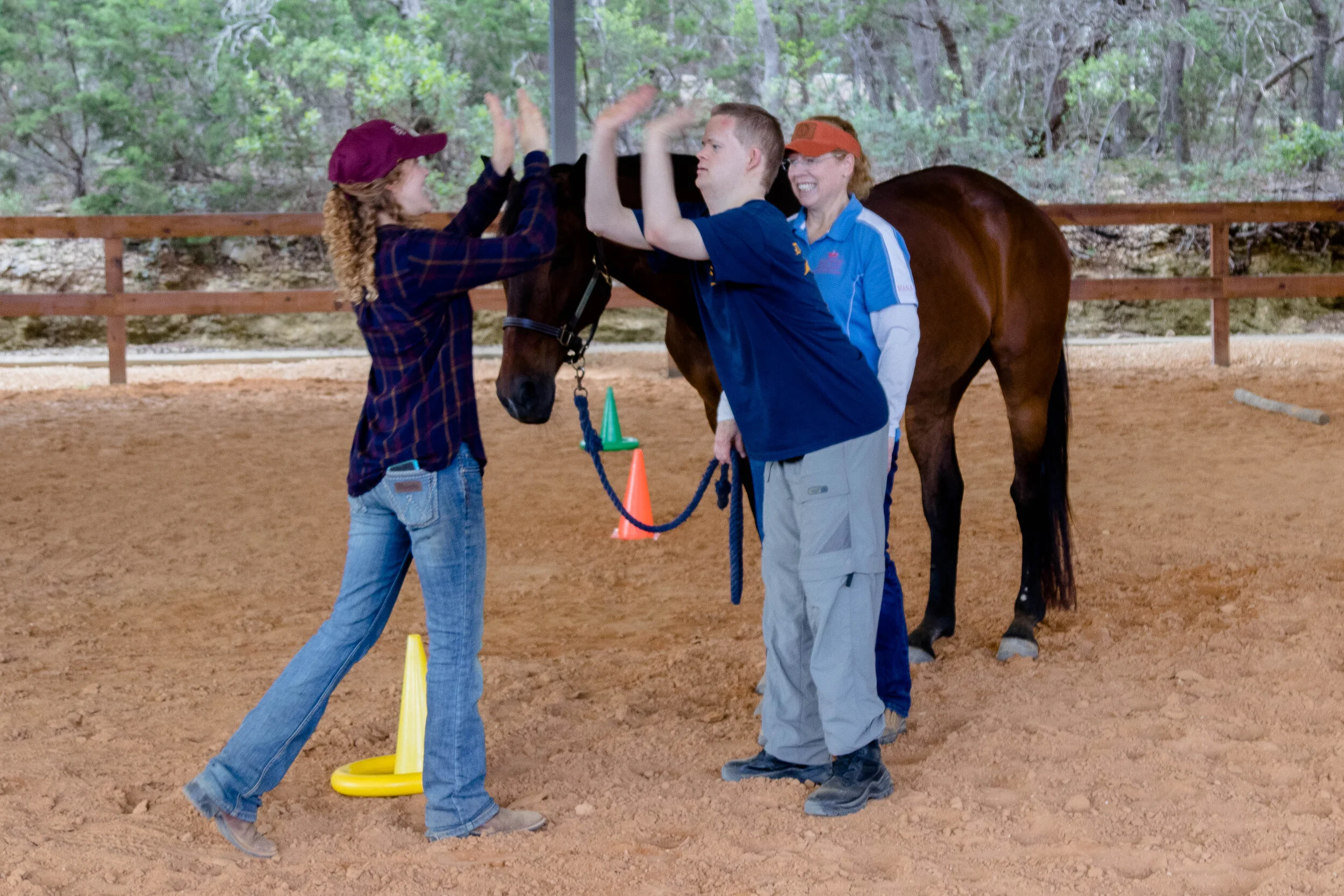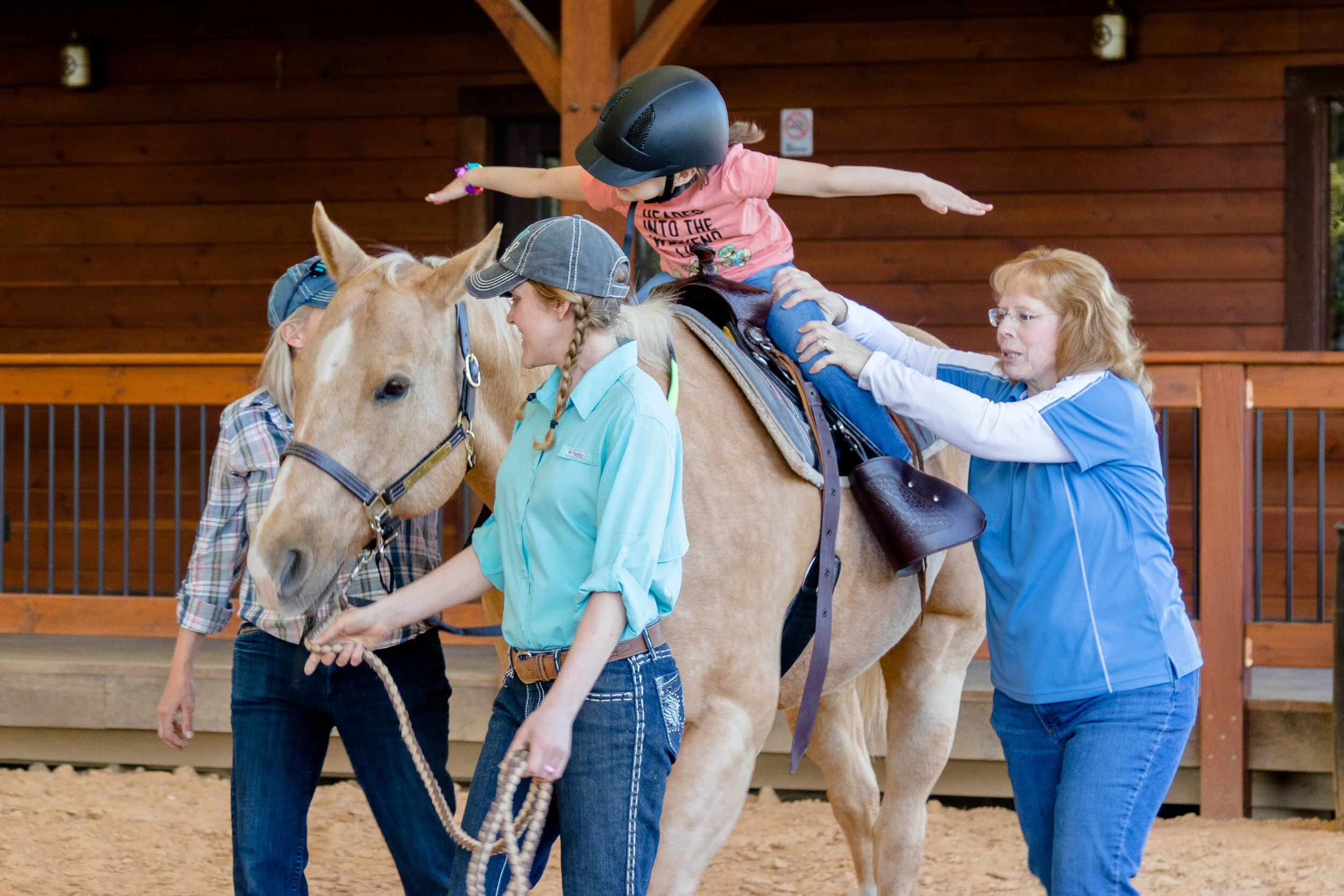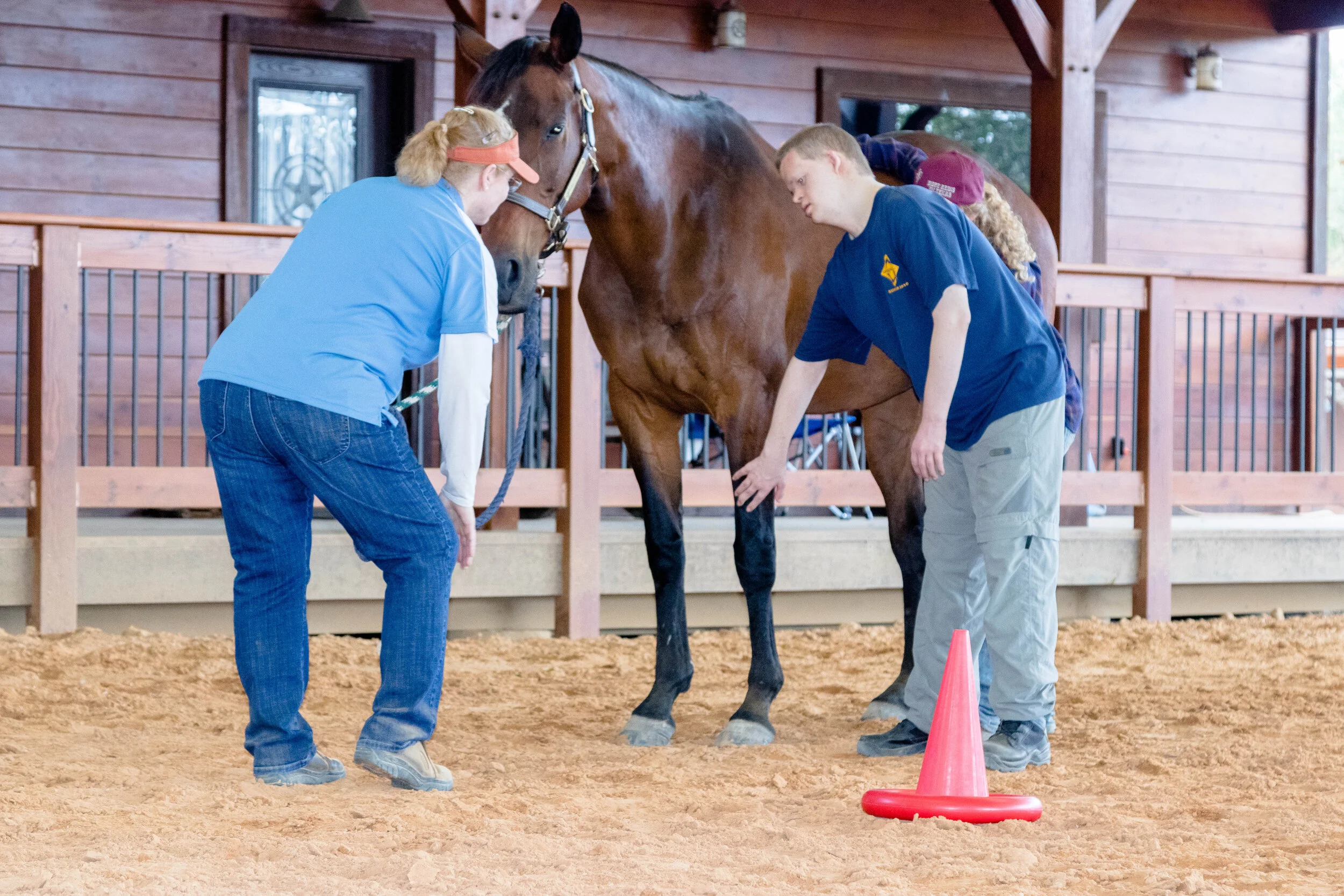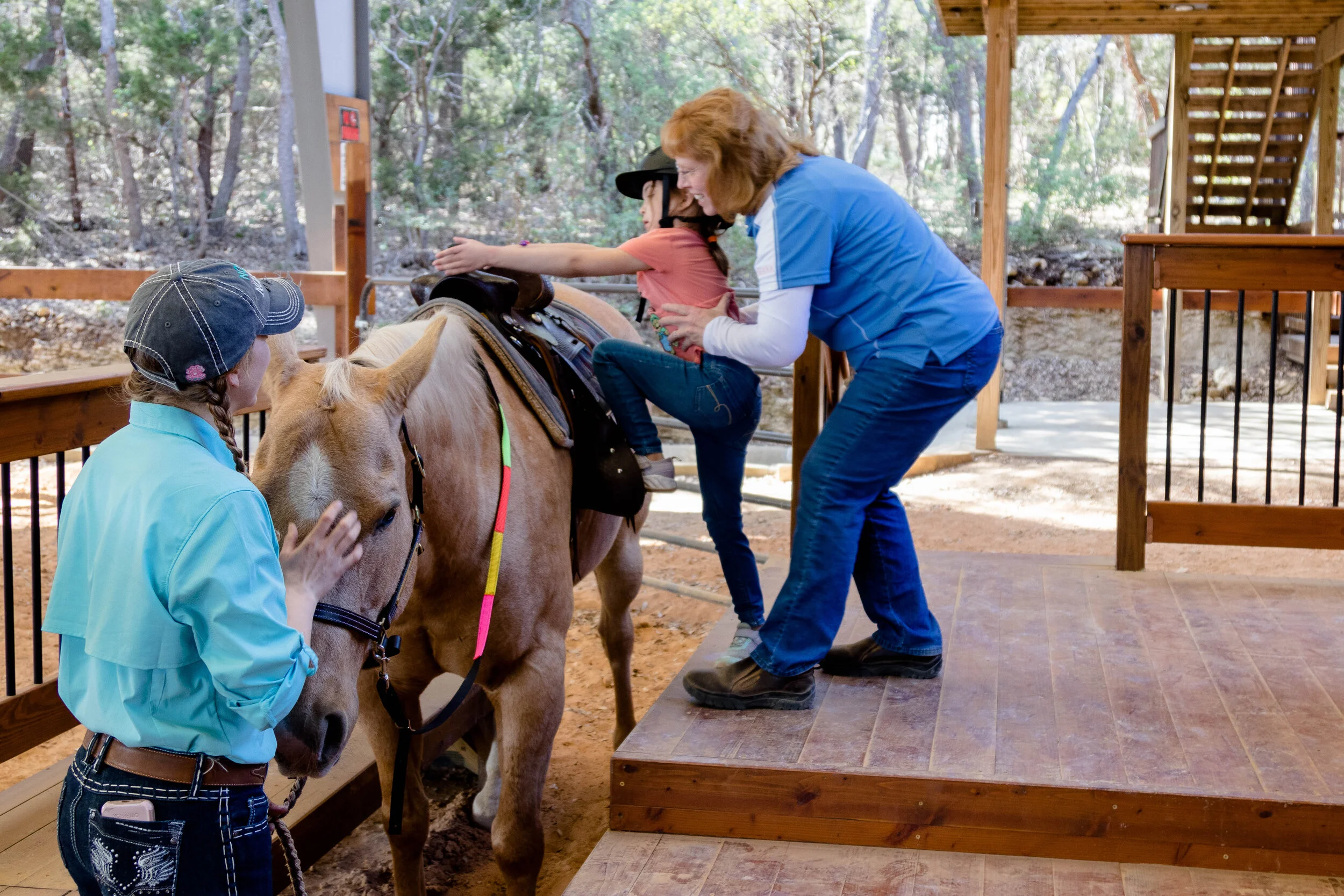Adaptive Riding
Hope Reins offers adaptive riding lessons to a wide range of individuals with special needs. Our PATH Intl. Certified instructors have years of experience, and each of them have a sincere desire to see living hope restored in people’s lives through the use of horses.
Adaptive. or therapeutic, riding is designed to benefit a rider’s emotional, spiritual, physical, cognitive, and social well-being. Though this service is not considered a medically prescribed physical, occupational, or speech therapy, it does provide physical and mental benefits. These lessons also provide the rider the ability to enjoy God’s Creation in a peaceful and rustic atmosphere.
Our therapeutic riding instructors are certified through PATH Intl.’s year-long certification program. Through this program, our instructors have gained more in-depth knowledge on horsemanship and disabilities, as well as safety and other guidelines stipulated by PATH Intl. that pertain to the adaptive riding industry.




